Body Composition: Definition, Importance, Measure and Types

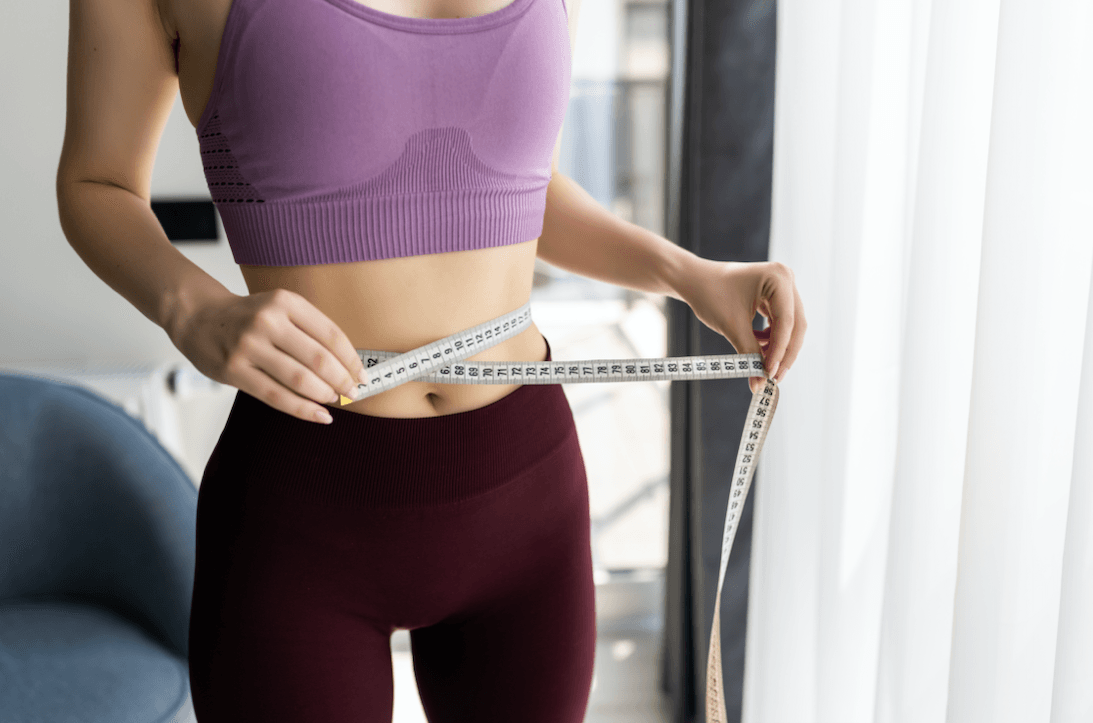
Related products
Body Composition Overview
Body composition means the percentage of body muscles, bones, blood, water and other tissues. As fat percentage is highly relevant to body shape and health, sometimes, body composition is just used to refer to the fat percentage. It helps the health professionals to judge the health of an individual. Just weighing the body doesn't give information about the relative amounts of different components in the body, and the determination of body composition is helpful to achieve the fitness targets of more muscles and less fat. Body composition depends upon variables like age and gender. Generally, women and elderly people have a higher fat percentage than men and younger people.
Essential body fat is necessary for health and fitness and optimum physical and mental well-being. However, excessive fat in the body increases the risk of health issues like heart disease, cancer, diabetes, etc. The determination of body composition is very important for the assessment of nutritional status and the monitoring of changes associated with diseases and growth. Various methods are used to measure the body composition, including skin fold measurement, measurement of
Body circumference, dual-energy x-ray absorptiometry (DEXA scan), bio-impedance analysis, hydrostatic weighing and other methods like MRI, CT scan and BioPod etc.
Body fat is of two types; the stored fat or adipose fat or the fat mass, which is stored in the form of fatty tissues and is an energy reserve that surrounds the organs and provides cushion and insulation, and the non-fat mass, or the essential fat which is stored in various body organs and tissues and is important for their normal structure and functioning. Depending upon the colour, it is either brown fat or white fat. The adipose fats are stored in different places, like the subcutaneous fat that is stored under the skin and the abdominal or visceral fat stored around various organs in the abdomen. Body fat is an important part of fitness which is the ability of a person to perform daily activities with optimal endurance, strength and performance and proper management of stress, fatigue and disease.
Achieving an ideal body fat percentage and having a good balance between other body composition parameters like proteins and water is vital for overall health. A good body fat composition depends upon the age, gender and level of physical activity. For men aged 20-39 years, the body fat ranges between 8-19%, and for women of the same age group, the range is 21-32%. The fat percentage, however, increases with age, and for men and women aged 40-59, the fat percentage must be 11-21% and 23-33%, respectively. Likewise, in the age group 60-79, it must be 13-24% and 24-35% for men and women, respectively (UC Davis Health, Body Composition Analysis). The minimum essential fat percentage for men and women is 2-5% and 10-13%, respectively, and a fat percentage of over 25% for men and over 32% for men is classified as obesity (American Council on Exercise).
What is Body Composition?
Body composition means the percentage of different constituents, particularly fats, proteins and water, in the body. Measuring the body composition allows health professionals to determine the health status without harming the body or inflicting an injury. It provides information about the distribution of body mass among various body compartments. The major constituents of the human body are fats, proteins, minerals, bones and water. As fats occupy more space than the other components, body composition is mainly aimed at determining body fat and lean body mass. Water is the largest constituent of the human body, accounting for 60% of total body weight in males and 55% in females. Fats, proteins, bones and minerals follow it.
Why is the Body Composition Important?
The health and wellness community unanimously agrees that abnormal body composition is a major disease risk factor. Being too fatty or thin, and having more or less weight than expected for a specific age, weight, and height, is not a sign of perfect health. Body fat percentage measurements allow physicians to understand health better. The body composition tells a person that the tissues lost in a weight loss program are muscle tissues or fats, as the measures like BMI and total body weight do not give that information. As a person ages, the body starts to lose muscles and the fat percentage increases. Determining body composition in old age helps in formulating diet and exercise plans to prevent or at least reduce the rate of loss of muscles and bones and maintain the ideal balance in the body.
Some other benefits of having an ideal body composition are;
- Better quality and quantity of sleep
- Better regulation of blood glucose and blood pressure
- Better self-confidence and mood
- Increased endurance and energy throughout the day
- Reduced chronic pains like pain in the lower back, hip and joints
- Better circulation and a lower risk of cardiovascular diseases
- Better fertility and a lower risk of reproductive issues
- Better respiratory functions like breathing and lung functions
- Better insulin sensitivity and glucose tolerance
The body composition determination is useful for people recovering from different chronic diseases and wants to know if the dieting strategies and lifestyle support the recovery process and if any adjustments are required.
What Method is used to Measure the Body Composition?
Different tools and methods are used to measure body composition. Different methods provide different accuracy and need different interpretations. The home-based methods are less accurate and provide just estimations. Here are some important methods used for the determination of body composition.
- Skin fold caliper: It is an old method used for over half a century. Using a portable calliper, it measures the presence and thickness of the subcutaneous fat, which is present at different body locations under the skin. The measurements are done at 3-7 sites chosen based on gender and age. For a 3-site measurement in the men, the sites used are the triceps, chest and area under the scapula or the thigh, abdomen and chest. For a 7-site measurement, the areas under the shoulder blade and near the armpits are included. For a three-site measurement in women, the thighs or abdomen, areas above the hip bone and triceps are used. For a 7-site measurement in women, the other areas used are under the shoulder blade, near the armpits and chest. It is an affordable and quick method at home using portable instruments. It provides reasonable accuracy. However, it requires the person doing it to have basic knowledge of human anatomy and good practical experience. It requires the pinching of body tissues, and the feeling of pinching is uncomfortable for some people. The accuracy depends upon the skill of the person performing the measurements, and proper management by a skilled person provides results with an error of 3-5% of fat percentage (Deurenberg and colleagues, the British journal of Nutrition, 1990).
- Body circumference measurement: The body's shape varies from person to person and provides information about body composition. Measuring the circumference of some body parts helps estimate the body's fat percentage. In the case of men, the waist and neck circumference are measured, while in the case of women, the hip is included. It is an affordable and easily accessible method and needs minimal tools (only a calculator and a measuring tape). It is performed easily at home. However, the accuracy is lower due to differences in fat distribution and body shape. The error margin is 2.5-4.5% body fat. The accuracy is lower or greater depending on how much a person is closer to the people that were used to develop the equations.
- Hydrostatic weighing (hydro densitometry or underwater weighing): Hydrostatic weighing uses body density to guess its composition. During the procedure, a person is weighed while submerged in the water, and the air is exhaled from the lungs. The weight is again calculated while the person is on the land, and the amount of air leaving the lungs during exhalation is calculated. Then an equation is used to estimate the body density, which is then used to guess the fat percentage in the body. It is a quick and accurate method. However, submerging under the water is only pleasing for some people.
Moreover, it requires a person to remove maximum air from the lungs and hold their breath while under the water. It is not a home method and is available at fitness centres and medical settings. It has an error margin of 1.5-2% of body weight when performed correctly.
Dual-Energy X-ray absorptiometry (DEXA): It employs the X-ray beams of two different energies to determine the fat percentage in the body. During the procedure, the patient is made to lie on the back for around 10 minutes, and X-rays are used to scan the body. The amount of radiation is very small and not dangerous. Besides the fat percentage, it is useful to calculate lean mass and bone mass. It is an accurate method and provides information about other body tissues like bones. However, it is expensive and only easily available to some people. It is available in medical settings or at research centres. It provides consistent results with an error margin of 2-5-3.5% body fat.
- Air displacement plethysmography (BodPod): It is similar to hydrostatic weighing and estimates the fat percentage by calculating the body's density. However, instead of water, it uses air. The ADP device uses the link between air pressure and volume to calculate the body's density. The person is made to sit inside an oval-shaped chamber, and the air pressure is altered. For more accurate measurement, a bathing suit or skin-tight dress must be worn during testing. It is a quick and easy method and doesn't require a person to be submerged in water. However, it is expensive and has limited availability. It is available only at specific fitness centres and medical facilities. It provides a good margin of accuracy with an error of 2-4% in body fat.
- Bioelectrical Impedance Analysis (BIA): It is done using the BIA device, which detects how a body responds to minute electrical signals. The electrodes are placed on the skin for that purpose. The transmitting electrodes send signals into the body, and the receiving electrodes receive them after passing through various body tissues. Due to more water in the muscles than in the fat, the electric current move more easily through the muscles than through fats. The device uses the values of physical responses to current to calculate the fat percentage. The advantages and disadvantages of BIA depend upon the devices being used, which are available in various types. In general, it is much easier and quicker. However, the accuracy depends upon the device used, and food and water intake greatly influence the results. The devices available at fitness clinics and medical facilities are more sophisticated and accurate than those available for users. The average error rate is 3.8-5%, which increases or decreases depending on the device used and other variables (European Journal of Clinical Nutrition, 2013).
- Electrical Impedance Myography (EIM): Its working mechanism is similar to BIS and BIA. It uses electrical responses to determine body composition. However, unlike the previous method, it doesn't send signals to the whole body and targets a smaller area. The technology is being used to prepare small devices placed on certain body areas to estimate the fat percentage in these areas. It is thus very close to skin fold callipers, but the technology used is markedly different. It is easy and quick. However, the accuracy of these devices is questionable as some cheap devices available in the market are highly inaccurate. Limited information is available about accuracy, although some studies have claimed an error margin of 2.5-3% (European Journal of Sport Science, 2018).
- 3-D body scanners: The 3D scanners use infrared sensors to have a deeper and more detailed look at the body’s shape and structure and generate a 3-D model of the human body. Some devices use a rotating platform where the patients are able to stand for several minutes while the sensors prepare the model by scanning the body. The other models use scanners that rotate around the body. The data generated is fed into the equations by the devices to calculate the fat percentage. The 3D scanners are very similar to the circumference measurements.
However, they provide much greater information. The 3-D body scan is easy and quick, but the availability of such devices is a serious issue. Consumer-grade devices are available in the market. However, they are only affordable for some, and it is mainly done at specific medical centres and fitness clinics. Limited data are available about the accuracy. However, some sources claim the error margin to be around 4% body fat (European Journal of Clinical Nutrition, 2016).
- Multi-component models: The multi-component models are the most accurate methods for measuring body composition. In these models, the body is split into various compartments, the most common being three or four. Then, various tests are conducted to estimate body contents like bone mass, water content, body volume and fat mass. The tests mentioned above, like ADP or hydrostatic weighing, are used for body volume, BIA or BIS for body water, and DEXA scans for bone content.
The information from all sources is compiled to develop a more accurate and complete picture of the body composition. Although highly accurate, it is not easily available to the general public and is complex and needs multiple tests. It is only available at high-level medical and fitness centres. It is a gold standard for body composition, and the error margin for accurate measurements is close to or less than 1%.
What are the Different Types of Body Fat?
The fatty tissues or body fat is a complex organ containing connective tissues, blood cells, immune cells, nerves and fat cells. Its job is to insulate the body and serve as an energy reserve. Although fat feels similar from the outside, it is of various types. These types have distinct distributions and functions. There are various criteria used for the classification. Based on the colour and distribution of fat in the body, there are the following types;
- Brown fat: Known as thermogenic fat, it is energy storage and burns to release energy in some situations like cold weather. The brown fat stores the energy in smaller droplets that are specialised to burn easily. It is around the neck, chest, heart, adrenal glands and kidneys. People with more brown fat are healthier and leaner, which lowers the risk of diseases and improves metabolism.
- White fat: It is the predominant type of body fat. It stores energy in larger fat droplets that are harder to burn. Besides storing energy, it secretes various hormones like adiponectin and leptin. It is present in the abdomen, legs and chest.
- Beige fat: Sometimes, the brown fat changes into beige fat, called brite fat. It burns to release energy. The beige fat behaves like both the brown and white fat. It stores energy like white fat, and when the body is exposed to stress, it breaks down like brown fat to release energy. It is found in smaller pea-sized deposits along the spine and under the skin near the collarbone.
- Visceral fat: It is stored around the major organs like the liver and kidney and deep in the abdomen. The buildup increases with age, and women develop more fat in the abdomen. It is the so-called ‘hidden’ fat and is 10% of all fats in the body.
- Subcutaneous fat: It is the fat present under the skin, the most abundant form of fat, and is nearly 90% of total body fat (Clinical Nutrition, 2019). Like other fats, it breaks down to produce fatty acids, which cause metabolic issues like insulin resistance. It insulates the body from heat and cold.
- Full upper body fat: It is caused by overeating, particularly sugary foods, and stored in upper compartments.
- Lower abdominal fat occurs due to depression, anxiety and stress and is stored in the lower abdomen.
- Lower body fat: It develops due to excessive gluten content in the diet and is stored in the lower body.
- Lower body fat in the legs: It is hereditary and develops during pregnancy. The hormonal disturbances cause changes in the fat distribution in the body.
- Stomach and upper back fat develop due to low physical activity. Excess sugars and processed foods increase the risk of fat deposition in the upper back, particularly in women.
How Does Body Fat Affect the Body Composition?
The fat stored in various body compartments is one of the major determinants of body composition, that is, the proportion of different components in the body like muscles, fats, bony tissues, soft tissues etc. Higher total body fat increases the fat percentage in the body composition. Obese people have a fat percentage of more than 35% for women and more than 25% for men. It causes increased body weight and lower density and increases the risk of various diseases.
Body fat is inversely related to muscle mass. Excessive fat masks the muscles and makes it difficult to feel muscle strength and tone. Excessive fat impedes the growth of muscles resulting in poor athletic performance. Body fat percentage and distribution influence body shape. The accumulation of fats in various tissues, like in the abdomen and muscles, influences their shape and tone, and a fatty person is likely to have an abnormally pear-shaped body.
Moreover, having more fats in the body increases the risk of various health risks and diseases, like diabetes, cancer, and heart disease. Therefore, an ideal body fat percentage and distribution balance is important for optimal body composition. The lifestyle and nutritional strategies must be focused to achieve an optimum fat percentage for better well-being.
How to Improve the Body Composition?
The improvement programs aim to reduce fat mass and increase the proportion of muscles. The resulting decrease in the fat percentage results in better body composition. The most important factors to be considered are exercise and nutrition. However, the impact of both of these factors is more complex. They are, however, good options to start with.
- Exercise training and physical exercises: Physical activities allow a person to burn unwanted calories stored as fat and improve the strength and size of muscles. Some exercises, like weight training, are very effective, and others help in weight loss. Spending just 150 minutes weekly on physical activities and exercises results in a significant decrease in fat mass and a modest decrease in total weight, says Damon L. Swift, PhD. Spending 250 minutes weekly or higher times are recommended for significant Weight loss. Besides the fat loss, both strength and aerobic exercises improve the muscles' tone, strength and size.
- Reduce caloric intake: Excess fat accumulation results from taking extra calories that the body is able to burn, which are then stored as fat. So, any program intended to improve body composition must include nutritional factors. A diet that consistently provides lower calories than the physical requirements of the body results in weight loss. Some foods responsible for weight gain are processed foods like fries, pizza, ice cream etc., which are highly liked by the brain and rich in calories, but do not satisfy the stomach due to lower fibre and protein content. A good practice is to calculate the daily calorie intake by adding the caloric values of all the food taken throughout the day and using a calorie-restricted diet to achieve a consistently lower caloric intake.
- Increase protein intake: Proteins are more satisfying for the abdomen, and their metabolism consumes more calories than the other nutrients. Between 10-35% of calories must come from proteins.
- Increase the fibre in diet: Fibrous contents in the food cause feelings of fullness in the body and have various other health benefits, and it is important to add more fibre to the diet from sources like vegetables, fruits, nuts, whole grains and beans. The diet must provide at least 38g of fibre to men and 25g to adults men under 50.
- Sleep: The research has found that the body composition in people taking 7-9 hours of sleep is better than those with sleep deprivation or poor quality sleep. Both factors are closely linked, and better body composition improves sleep.
- Alcoholism: Some alcoholic beverages are rich in calories, resulting in excess calories and weight gain. So, people consuming high amounts of alcohol are at higher risk of being obese, and it is a good idea to reduce alcohol consumption for better body composition.
Besides, some factors like genetics and age influence the body's Composition. As these factors are not under control, it is better to focus on controllable ones. All plans must aim to reduce fat mass and increase lean body mass. The journey is expected to be long with many hurdles and issues, and it is a good practice to keep records and set small achievable goals.
Is diet one of the ways to improve body composition?
Yes, diet is among the key factors in improving body composition. A good nutritional plan formulated to improve the caloric balance, provide all essential macronutrients (high proteins and fibre and low fats) and micronutrients (minerals and vitamins), and maintain hydration status is useful to boost body composition. Some factors to be considered are portion size, proper timing of meals and avoiding crash foods. Consistency is the key to success.
Do I need to exercise to improve my body composition?
Yes, exercise is very important and helps improve body composition. Resistance exercises and strength training are very useful in improving body structure and composition. Exercises improve body composition by promoting the preservation and growth of muscles, causing fat loss, improving the tone of various body organs, improving bone health, boosting cardiovascular endurance, improving mental well-being by causing better mood, lowering stress levels and increasing overall long-term sustainability.
What are the Consequences of Poor Body Composition?
The desired goal is to have optimum levels of fats in the body, and higher and lower body fat levels have negative health outcomes. The consequences of poor body composition are grouped into various categories.
Consequences of low body fat: A fat percentage of less than lower than the required for a given age group and gender is considered dangerous, and a fat percentage of less than 8% for men and 14% for women is considered a warning sign. Body fat has an important role in keeping the body functions going, including the activities of the nervous, endocrine, skeletal, reproductive and cardiovascular systems and without fat, all of these functions are compromised. Here are some negative health outcomes of very low body fat.
- Increased risk of heart problems: Having extremely low body fat comprises cardiovascular health. For example, it is noted that when Athletes lower their body fat to improve performance, it results in lower heart rate (bradycardia). Persistent lower heart rates result in dizziness, cardiac arrest and death in severe cases. A severe dietary deficiency sometimes causes electrolyte imbalances that cause cardiac arrhythmia and sudden death.
- Poor energy levels: A fat-depleted person has no energy reserves and becomes starved and unable to perform in emergencies. A lower heart rate and lower levels of thyroid hormones due to lower fats in the body negatively influence energy production.
- Body loses insulation from the cold: A fat-depleted person feels much colder than a normal person. It is because the layer of fat is an excellent insulator. The other consequences of lower fat percentage, like lower energy production, lower levels of thyroid hormones and bradycardia, contribute to coldness.
- It becomes difficult to carry on exercises: Carbohydrates like sugars are an instant source of energy, and after 15-20 minutes, the sugar level in the blood is depleted. The body turns to the stored fat to sustain itself. Too low fat means no such reserves, and the body can't continue to perform.
- Muscles take longer to recover from exercises: Being excessively lean reduces a person's ability to get maximum exercise benefits. Lower fats mean no glycogen is stored in the liver and muscles (depleted before fats), which are necessary to recover from the exercises.
- Constant hunger: Optimum fat levels are necessary if a person is working to reduce hunger. Too much fat in the body results in decreased production and levels of leptin, a hormone produced by the fat cells. The lower level is sensed by leptin receptors in the brain, increasing the appetite to counterbalance. As a result, the person always feels hungry.
- Lower testosterone levels: Lower leptin levels due to extremely low body fat causes lower testosterone levels. Leptin causes lower testosterone through a complex interaction of signals between the pituitary gland, hypothalamus and testicles. It is seen that during the preparation of an athletic performance, the testosterone levels of the athletes drop significantly.
- Weaker muscles: Having too lower fat accumulates several factors like lower testosterone levels, poor recovery from the exercise and poor exercise tolerance, that result in poor muscle strength. After the end of fat reserves, the body starts consuming the proteins in the muscles to fulfil energy demands resulting in lower muscle mass. It is noted that the bodybuilder loses muscle strength during preparation for the competition and takes months to regain it.
- Poor sperm count and fertility: Both issues result from poor testosterone levels. The fats provide the necessary raw materials for synthesising steroid hormones, including testosterone. Lower testosterone and leptin levels result in a condition known as hypogonadism (hypogonadotropic). It is due to emergency alarms in the body that signals the body to focus on survival and shut down the leisure activities like sex. The sperm (and egg) count drops, and the attempts to achieve pregnancy often result in frustration.
- Increased frequency of illnesses: Having an extremely low body fat percentage causes emergencies in the body leading to higher levels of stress hormones (cortisol) that result in depressed functions of the immune system. It significantly increases the risk of bacterial, viral and fungal infections as the body is not able to handle normal microbial challenges.
- Weak and brittle bones: Lower body fat and lower weight decrease the ability of the body to absorb and utilise vitamin D and calcium. The research has noted that athletes working to achieve extremely low body fat and leanness have lower bone density and sometimes develop osteoporosis.
- Poor lifestyle: Achieving an extremely lean body requires enormous effort, and a person must make desperate lifestyle changes. For example, a person needs to control their caloric intake fully, avoid fatty, processed and sugary foods, prepare them, and leave many luxuries like alcohol. The result will be a significantly poor lifestyle without any taste and relish.
- Poor mood: Extremely low body fat influences the brain and mood, as healthy fats are crucial for brain functions. Low levels of fatty acids and essential fats cause symptoms like mood swings, irritability, mental fatigue and poor concentration. Having a poor energy level all the time doesn't help too.
- Poor skin: Fats in the body and dietary fats are crucial for healthy and glowing skin. Moreover, people aiming to lose weight and achieve lean bodies must leave water-storing foods, leading to dehydration. In case of dehydration, the body sucks water from the skin and sends it to the vital organs, leaving the skin splotchy, dry and flaked.
Benefits of low body fat: Low body fat is not just harmful, but it has many benefits that force many people to lose weight. These are;
- Physical movements become easier: As a person becomes more and more lean, the movements need less and less energy as the body mass and volume are reduced. The activities like squatting, jumping and running become easier. It allows a person to add more weight and resistance to the exercises for a better body shape.
- Better fitting of clothes: Losing weight through dieting and exercising and the resulting lean body causes a proper fitting of the contour of the clothes, and it becomes way easier to plan a dressing schedule.
- Better confidence in body shape: A lean body causes better presentation and posture and allows one to handle challenges better. Lean and muscular people are more likely to be successful in dating and professional life, as poor self-image and body shape anxiety cause poor self-esteem.
- Better and longer life: Everyone develops diseases at some point. However, as body fat is the origin of many problems, the onset of chronic health issues like diabetes, hypertension, arthritis and heart disease is delayed in lean people. The onset of these diseases is delayed by 1 or more decades, and a lean person is likely to live longer.
- Better social standing: Whether a person likes it or not, people with better fitness and appearance are thought to be of higher social status and deemed more attractive by society. People develop better feelings about a lean person that promotes better career options and better social life.
- Better athletic performance: Being an athlete requires a person to spend some time in sports training. Combining fat loss with exercise training results in an athletic look and improve sports performance. A lean body allows a person to move his body more quickly, adding to the sports performance.
- Lower inflammation in the body: Inflammation results from many factors. Excessive body fat increases the release of inflammatory chemicals like cytokines, causing a persistent low to moderate level of inflammation. It makes it very difficult to lose weight and burn fat. Lifestyle and nutritional strategies to reduce fat deposits are among the best inflammation control strategies.
- Better old age: As a person ages, the body accumulates more and more fat. After the 60s, and even 50, having a better and lean body with stronger muscles becomes very rare. As a low-fat and better body shape is a sign of discipline, better social status and health, such a person is likely to be more attractive and acceptable in society.
Consequences of high-fat percentage in the body: Poor body composition in the form of a high-fat percentage is a negative sign and poses health risks. Some of the consequences of high-fat percentage in the body are;
- Higher risk of type 2 diabetes: Type 2 diabetes is a condition that causes higher blood sugar levels. The body produces insulin to manage these higher levels. However, the body cells are no longer responding to that insulin. 80-90% of the people with type 2 diabetes are obese or overweight. Type 2 diabetes increases the risk of health issues like nerve damage, eye problems, kidney diseases, stroke and heart diseases. It is possible to delay or prevent the onset of type 2 diabetes by a 5-7% decrease in body weight.
- Hypertension: It is a condition in which the blood flow in the blood vessels exerts greater pressure on the walls of blood vessels than normal. It causes damage to the blood vessels, puts a heavy strain on the heart, and increases the risk of death due to stroke and heart attack. A higher fat percentage is among the risk factors for hypertension, and a 5% increase in body weight causes a 20-30% higher incidence of hypertension (Dr Ramachandra, MD).
- Heart diseases: Heart diseases are a group of health issues that influence the heart, including abnormal heart rhythm, angina, myocardial infarctions, and heart failure. Factors associated with high fat, like hypertension and higher levels of fats and glucose in the blood, increase the risk of heart disease. Therefore, losing 5% body weight is beneficial for heart health. A 2007 study published in the Circulation found that a 10kg increase in body weight is associated with a 24% increase in the risk of stroke and a 12% increase in the risk of coronary heart disease.
- Sleep apnea: Sleep apnea is a complication of obesity in which regular breathing during sleep is comprised, causing poor quality and disturbed sleep. untreated sleep apnea is a risk factor for several health issues.
- Higher risk of stroke: Stroke is a condition in which the blood supply to the brain is lost due to the bursting or blockage of a blood vessel in the neck or brain. It permanently damages the brain tissues and causes a person to become disabled for life. Hypertension (among the complications of obesity) is among the leading causes. A study noted that obesity causes a 24% increase in the risk of stroke.
- Fatty liver: It occurs due to the buildup of fats in the liver, leading to liver cirrhosis, liver damage and even liver failure in severe conditions. Two conditions in the fatty liver disease family are nonalcoholic steatohepatitis (NASH) and nonalcoholic fatty liver disease (NAFLD).
- Metabolic diseases: Metabolic diseases are due to disturbances of metabolism and are not related to any infectious cause and increase the risk of stroke, diabetes and heart diseases. Important metabolic diseases associated with higher fats are fatty liver, hypertension and type 2 diabetes.
- Diseases of the gallbladder: The risk of cholecystitis (inflammation of the gallbladder) and gallstones is considerably increased if a person is obese or overweight. Too much cholesterol in the bile increases the risk of gallstones.
- Osteoarthritis: It is a chronic condition that causes swelling, pain and lower mobility of the joints. An overweight or obese person has extra weight on the bones, cartilage and joints and has a higher risk of osteoarthritis.
- Higher risk of some cancers: Cancers develop when the body tissues multiply uncontrolled, producing an irregular ball of cells known as tumours. Obesity and being overweight increases the risk of some cancers like pancreatic, uterine liver, gallbladder, kidney, oesophageal, colorectal and breast cancer. Obesity accounts for 4-8% of cancer cases (Sukanya Pati and colleagues, 2023).
- Pregnancy complications: Being obese and overweight increases the risk of pregnancy complications like a higher risk of gestational diabetes, preeclampsia (higher blood pressure during pregnancy) and problems during the delivery, increasing the risk of cesarean section. Higher risk of kidney diseases: Obesity is among the risk factors of many diseases that increase the risk of kidney diseases like hypertension and diabetes. Even in the absence of such issues, obesity itself promotes kidney health issues.
- Mental health issues: Being overweight and obese increases the risk of mental health issues like depression due to various issues associated with excessive weight, like stigmas, biases, social rejections, feelings of shame or guilt and poor self-image and self-esteem.
How Does Genetics Determine the Body Composition?
Body shape and body composition are strongly linked to genetics, as it is noted that people of the same family often have very similar body sizes and shapes. Some genetic and family factors linked to body composition are;
Genes inherited from parents: The genes that control the appetite, digestive enzymes and hormones are inherited, and according to J.B. Owen (University of Wales Bangor, Gwynedd, UK), the traits associated with body composition have a high heritability of 0.4-0.7. Being obese and overweight is thought to be a genetic response to the issues like nutrition, and some people are genetically predisposed to the development of obesity. The inheritance of so-called 'thrifty genes' predisposes some people to increased fat deposition and reduced fat loss. Besides the genes inherited from the parents, the similar conditions of wombs (in the case of siblings) influence body composition.
Maternal healthcare during pregnancy: The material healthcare during pregnancy matters as the research has shown that babies born to mothers who eat more carbs and fats have more body fat than babies born to mothers who eat more proteins.
Genetics influence the type of fat: Genetics influence both types of fat storage, i.e., android fat deposition, in which excessive fat accumulates in the abdomen and gynoid fat deposition, in which excessive fat is stored in the thighs, buttocks and hips. Genetics strongly influence the deposition of brown fat, a biologically active fat activated in certain conditions like extreme cold. Brown fat is more common in children. However, some people retain brown fat, the degree of which is determined by genetic factors.
Research backing of the claims: The twin studies involve the observations of the twin siblings and compare and contrast them to see how much influence genetics has on body composition. Some twin studies have noted that as much as 90% of the body mass index (BMI) variability is due to genetic factors. However, the BMI provides an incomplete picture of the body composition, like the proportion of fat and fat-free mass. A study involving 30 pairs of identical twins in 2004 found that genetics has a strong influence on body composition parameters than other factors like smoking, activity level, gender, age and number of children the parents has.
How Does Age Change the Body Composition?
With age, body composition changes even if there is no change in body weight. It is observed that muscle mass decreases and fat mass increases with advancing age. What causes these changes needs to be better understood. Some experts like Jennifer A. Schrack and Nicolas D. Knuth propose that there is a decrease in fat oxidation and the resting metabolic rate (RMR) with age, resulting in changes in body composition. It is true in the reverse, too, which means changes in the body composition cause lower RMR. The metabolic rate of different individual organs decreases in old age due to the decrease in size and mass of the tissue and organs.
Additionally, the increased fat mass is focused more on the abdominal region, which is closely linked to diabetes and cardiovascular health. According to Marie-Pierre St-Onge, PhD, the increased abdominal fat mass is due to increased fat deposition in different organs in the abdominal region, while the increased percentage of total fat mass is due to a reduction in lean mass. The loss of muscle mass, particularly skeletal muscles with advancing age is associated with increased mortality, lower ability to cope with stresses, physical disability and functional impairment.
The truncal or central adiposity seen in advanced age with stable body weight or BMI is termed metabolic obesity. It is observed in 13-18% of the individuals with normal weights. Physical activities, appropriate diet and certain pharmacology interventions are able to reverse that type of obesity.
How Does Athleticism Affect the Body Composition?
Athletic performance depends upon skill and health-related components like balance, reaction time, agility, speed, power and, after all, body composition. All of the fitness-related components are highly dependent upon the body composition. Increasing lean body mass improves power and strength related to muscle size and contributes to agility, quickness and speed. Likewise, reducing the non-essential body fat improves speed, agility, overall cardiopulmonary endurance and muscular strength. The non-essential fat adds to the body weight, increases resistance to the athlete's motions, and forces them to increase the force of muscular contractions for a given workload. It, in turn, limits movement capacity, coordination, balance and endurance. Therefore, achieving lower body fat helps athletes plan to engage in sports competitions.
Some sports cause the body to become massive and muscular, while others cause it to become lean. For example, heavyweight wrestlers need to develop a massive body. The increased mass provides more inertia and allows the athletes to perform with better stability. The increased mass is due to both an increase in fat and muscular mass. Athletic activities like football, running, and field throwing cause lean body and fat loss. Some other sports in that category are cycling and running. Athletic activities like weightlifting, martial arts, boxing, pole vaulting, high jump, wrestling and gymnastics need a high strength-to-mass ratio.
The athletes working to improve performance in such activities experience a stable body weight with lower body fat. Weightlifters, bodybuilders, boxers, powerlifters, martial artists and wrestlers compete according to their weight class. So, they focus their lifestyle, including nutrition and exercises, to have a stable body weight while improving their strength. Softball and baseball cause lower body fat and an increase in lean mass as the lean mass improves agility and speed while fat loss improves endurance. Soccer and basketball require the athlete to have moderate to high aerobic fitness and better strength, agility, quickness, power and strength. Such sports cause increased or at least stable lean masses and decreased fat mass.
Generally speaking, almost all athletic activities need an athlete to improve lean mass and maintain weight while losing fat mass. The nutritional and lifestyle changes and the exercise plans are focused on achieving the desired targets for a given sport. More fat adds to the resistance and decreases endurance, while lean body mass improves agility, speed and stamina. The athletes must work hard to combat the changes in body composition with age.
What are the Differences in the Body Composition of Men and Women?
The body composition of women is different from that of men. Generally, women have a higher fat mass and lower lean body mass. Such differences are due to the differences in hormonal levels, physical activities and different biological factors. The key differences are;
Fat mass: Although it varies, women, in general, have a higher fat mass percentage than men (8-19% vs 21-32%). It is related to the changes in the levels of sexual hormones. The hormonal regulation and reproductive functions need a woman to have essential fat mobilised easily to produce energy.
Muscle mass: Higher levels of physical activities and the effects of male hormones like testosterone cause a man to have higher muscular mass than the females. Testosterone, the primary male hormone, causes increased growth and development of the muscles, and the increased levels of physical activities further increase the muscle mass in relation to the fat mass. Due to lower levels of testosterone, women have lower muscle mass.
Average body density: The density of fats is lower than the muscles. Women's body has a higher fat-to-muscle ratio, so the average density is lower than the males. In women, the changes become more apparent after menopause. The fat mass increases, and the bone density decreases due to falling oestrogen levels. The males' higher bone density and muscle mass cause higher density.
Body shape: The fat distribution is different in men and women. Women have more subcutaneous fat than men. It results in differences in body shape. The characteristic curvaceous appearance of the females is due to higher fat deposition in and around the breasts, thighs and hips. The apple-shaped body of men is due to the storage of fats in the abdominal region.
Water content: The water content in females is slightly lower than in men (55% vs 60%) due to differences in body fat percentage, hormonal differences and body sizes.
The variations generally exist, although individual variations do exist between individuals. Factors like physical activity levels, lifestyle, age and genetics influence the degree and extent of differences. For example, an athletic and physically active woman has lower fat and higher lean mass than the population average.
What are the Benefits of Maintaining Healthy Body Composition?
Healthy body composition has several health benefits. There are countless reasons why a person must have a healthy body composition, e.g.
- Better appearance: A healthy body composition significantly improves body appearance. Ideal body composition means a person is neither overweight and obese nor extra slim and weak according to body shape, physique, gender and age. Increasing the muscle mass and lowering the fat mass causes a taunt tummy with a better appearance.
- Better energy: Healthy body composition improves energy metabolism. A person with excessive body fat is likely to be fatigued earlier with routine physical activity. Having more fat means a person has to carry more weight with a lower RMR per unit mass. A balance is necessary as having an excessively lean body means no energy reserves are available for a hard time.
- Lower risk of diseases: Healthy body composition significantly lowers the risk of osteoporosis, hypertension, metabolic diseases and heart diseases. Such health issues are related to the accumulation of excessive fats in the body and lower muscle mass. Therefore, adopting a healthy lifestyle involving better nutrition and exercise offers enormous health benefits.
- No obesity: A lean body increases the basal metabolic rate (BMR). It is because the muscle cells need energy even when a person is not working, while fat doesn't need energy. So, a higher BMR means the body is burning more calories at rest with lower chances of fat accumulation. Obesity contributes to many diseases like non-alcoholic fatty liver disease, diabetes, metabolic syndrome, cardiovascular diseases and chronic inflammation.
- Lower risk of insulin resistance and diabetes: The development of insulin resistance is among the first steps in the development of diabetes. Insulin resistance develops when the insulin cannot stimulate the muscle cells to take up glucose from the blood. So, having a lean body lowers the risk of diabetes by improving insulin sensitivity.
- Better and faster disease recovery: The protein requirements increase during wound healing. Often, the protein requirements exceed the daily protein intake, and the muscles undergo breakdown to meet the protein demands. A person having a lower body mass doesn't have that luxury, and recovery from diseases becomes challenging. For example, having poor muscle mass or losing muscle mass during cancer therapy is associated with a poor survival rate and increased risk of reoccurrence compared to people with good muscle mass.
- Stronger and healthy bones: A greater percentage of muscle mass increases the strength and density of bones. The muscles are a source of many nutrients, and muscle contractions stimulate bone growth, remodelling and better density. Weaker skeletal muscles are associated with thinner and weaker bones in elderly people.
- Lower risk of fractures from ordinary falls: Weaker muscles, particularly in the lower legs, are associated with poor body balance and an increased risk of fractures from ordinary falls and accidents. Having a better body composition lowers the risk of fractures.
Is there are supplements to maintain Body Composition?
Burning fats and losing weight are among the best ways to maintain body composition. However, supplements alone provide little relief due to the role of environmental, genetic and lifestyle factors. If the other factors are optimised (except the genetic ones that are not controllable), some metabolic supplements support a healthy body composition by promoting fat loss. Some dietary supplements that are effective for weight loss and their dosage recommendations are given below.
Caffeine and green tea extract: Very expensive fat loss supplements and techniques are not affordable for people with tight budgets. The supplements containing caffeine and green tea extract are cheap and easily available. Both are present in almost all fat burners present in the market. Caffeine boosts the removal of fats from the body and inhibits more fat deposition. The green tea extract has catechins, including the potent epigallocatechin gallate (EGCG), that inhibits the breakdown of norepinephrine, promoting fat burning and improving metabolism. Both are very effective when combined, e.g., 200-400mg of caffeine and 500-1000mg of green tea extract daily or as the weight loss professional asks.
Carnitine and Forskolin: Forskolin present in some herbs like Coleus forskohlii increases fat burning by activating the hormone-sensitive lipase (HSL), an enzyme that breakdown the fats causing them to enter the bloodstream and go into the tissues, e.g., muscles. Carnitine promotes fat loss by burning the fat present in the tissues. It causes the entry of fats into the mitochondria of cells, where it is burnt to produce energy. Combining both, like 1-3 g of carnitine (as L-carnitine) and 20-50mg of Forskolin, before a workout or breakfast works best.
Ginger and red pepper: Some spices like ginger and red pepper not only spice up the food, they increase the rate of metabolism. For example, capsaicin in red chilli causes fat loss by increasing norepinephrine levels and stimulating the rate of metabolism. It decreases hunger and thus reduces caloric intake. Ginger works using the same mechanism. It is known to stimulate lactic acid production, which increases lipolysis. Combining them by adding them into the food is an excellent weight loss therapy.
Sesamin and tetradecylthioacetic acid (TTA): Sesamin is a lignin preset in sesame oil. It is an antioxidant and a powerful fat burner. Research has found that sesamin stimulus the peroxisome proliferator activator receptor alpha (PPAR Alpha) in the liver, heart and muscles. These receptors switch on the genes that cause decreased fat storage and increased fat burning. TTA is a fatty acid that regulates the storage and burning of stored fats. It stimulates various types of PPAR, which provides additional efficacy. A good way is to combine both, like 250-1000mg of TTA with 500-1000 mg of sesamin, with any meal.
Mineral supplements: Some minerals boost weight loss and improve lean body mass. For example, calcium reduces weight gain and improves fat loss. Higher calcium levels suppress a hormone called calcitriol, which inhibits fat breakdown and improves fat gain. It lowers the absorption of dietary fats into the body. Trace minerals like selenium and zinc are important for producing thyroid hormones T3 and T4, which help boost the metabolism. Consult the nutritionist for a good mineral supplement that provides adequate levels of these minerals.
Arginine and glutamine: Amino acids build protein and have anabolic effects. Both glutamine and arginine are amino acids that are the building blocks of proteins and have fat-burning properties. Arginine boosts the production of nitric oxide (NO) and is a high-quality fat burner. The NO itself enhances fat burning. The body easily consumes the fat released from fat burning to produce energy. Glutamine increases the release of GH, which stimulants fat burning. A good option is to combine both, like 5-10 grams of glutamine with a workout, before bed or with breakfast, and 3-10 grams of arginine (as L-arginine or any other potent form).
Whey and soy: Both are protein supplements that improve protein synthesis and muscle growth and have fat-loss properties. The whey and soy protein powder improves body composition by combining fat loss with increasing muscular mass. Whey proteins depress hunger by increasing the levels of hunger-depressing hormones, glucagon-like peptide 1 and cholecystokinin. Combining both, like taking a shake containing 10g of each before or after a workout, is useful.
Conjugated linoleic acid (CLA) and fish oil: Many clinical trial studies have found that CLA is helpful to shed body fat and improve muscle mass and strength. It inhibits the lipoprotein lipase, the enzyme close to the fat cells that take the fats from circulation and store it in the body fat. Fish oil is a source of omega-3 fatty acids that help burn fat. The omega-3 fatty acids convert into the prostaglandins that promote thermogenesis and prevent the storage of dietary fat as fatty tissues. A good option is combining both, like 1-2g fish oil and 2-3g CLA, with lunch, dinner or breakfast.
Glucomannan and 5-HTP: Glucomannan is a soluble fibre that absorbs water in the digestive system to create a feeling of fullness. It is derived from the root of the Konjac plant. An important issue faced during the weight loss journey is the cravings for carbohydrates that are particularly severe at night. The 5 hydroxytryptophan (5-HTP) is produced from an essential amino acid and is useful to control carb cravings. A good option is to combine both, like 50-300 mg 5-HTP, with 1-2g glucomannan before meal.
Does Maintaining Healthy Body Composition Prevent You From Getting Diseases?
Yes, having a healthy body composition reduces the risk of diseases. The development of disease is in some way or the other related to the changes in body composition. Increased frequencies of illnesses in old age are related to the changed body composition resulting in more fat and fewer muscles. A perfect balance of muscles, bones, fats, connective tissues, and other tissues is a Hallmark of complete health. The most dangerous thing to have is excessive fat in the abdominal region. Better body composition protects against the following diseases.
- Cardiovascular diseases: Excessive fat, including visceral fat (abdominal fat), is associated with an increased risk of hypertension, stroke and heart diseases, and fat loss improves cardiac health. As low as 5-7% of weight loss is enough to experience cardiac health benefits.
- Metabolic diseases: Several metabolic diseases like excessive abdominal fat, hypercholesterolemia, diabetes and hypertension are linked to excessive body fat deposition. Achieving a better body composition by losing excessive fat decreases the risk.
- Type 2 diabetes: Higher body fat is the most important risk factor for type 2 diabetes. So, maintaining an ideal body composition helps mitigate the risk.
- Joint problems: Higher body weight due to an excessive percentage of fats, muscles and water strains the joints causing joint conditions like osteoarthritis. Maintaining an ideal body composition lowers the pain in the inflamed joints and reduces the risk of joint problems.
- Lower risk of some cancers: Some cancers, like pancreatic cancer, kidney cancer, colorectal cancer and breast cancer etc., have a strong association with the body fats. An ideal body composition lowers the risk of such life-threatening cancers.
Remember that body composition is just one of many aspects of disease prevention, and other risk factors like excessive alcoholism, smoking, sleep deprivation, higher stress levels, sedentary lifestyle and inadequate nutrition, etc., must be combined for better results. Having a good body composition is not a guarantee of disease prevention, but it is still a good thing to consider.




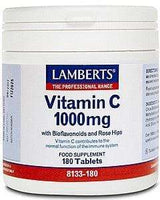
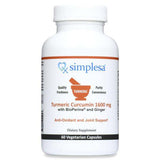








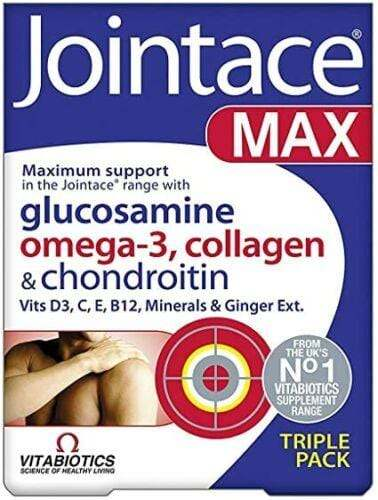
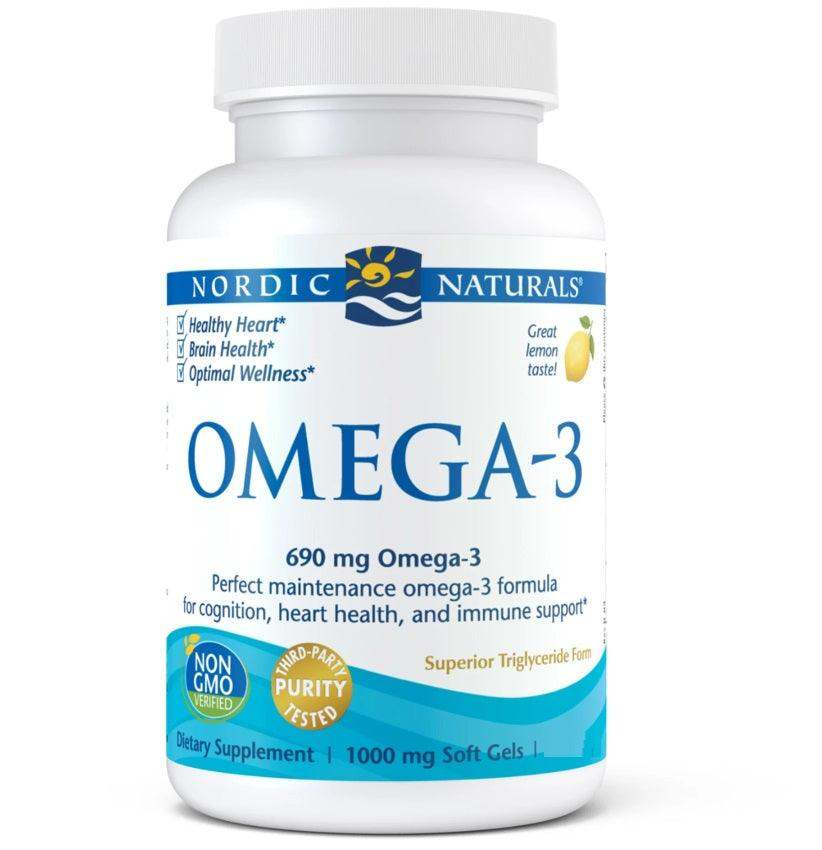

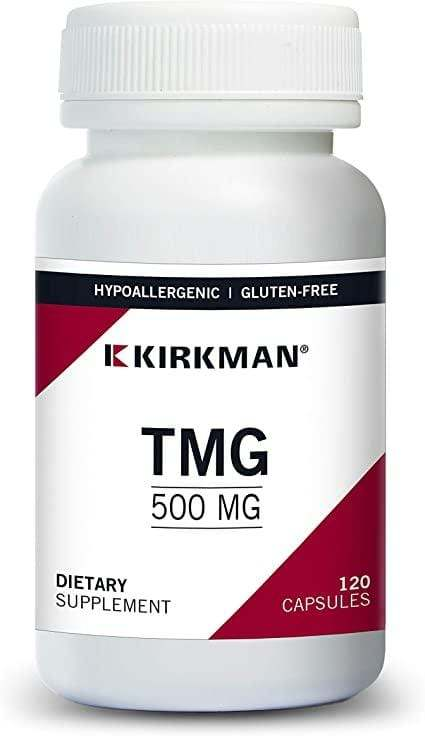


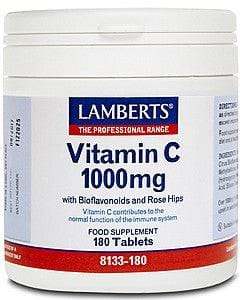
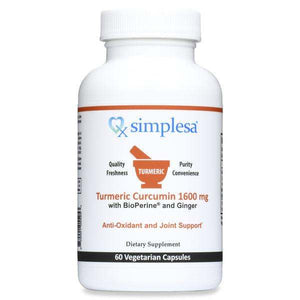







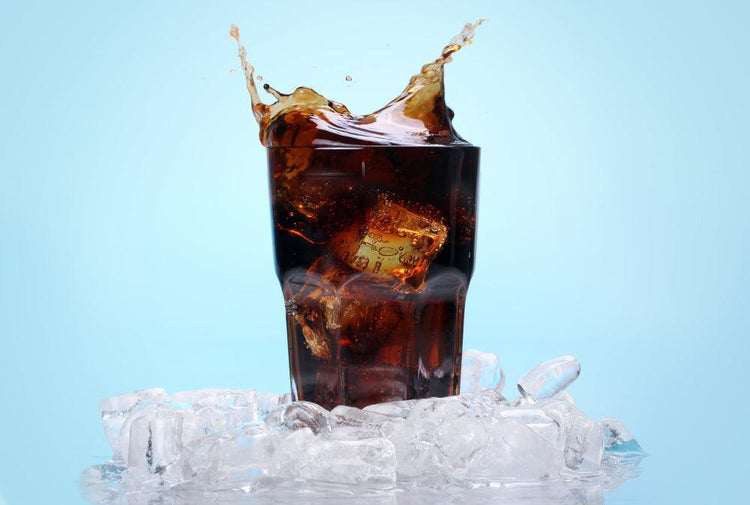








 Rated Excellent by 26,523+ Reviews
Rated Excellent by 26,523+ Reviews